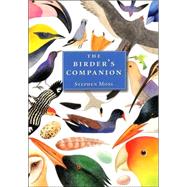
Stephen Moss is the author of several books on birds, including The Birdfriendly Garden and A Bird in the Bush: A Social History of Birdwatching. He lives in London, where he produces a wildlife series for BBC radio.
Clive Dobson is a versatile artist and illustrator with many books to his credit, including Tex and Watersheds. He lives near Peterborough, Ontario.
| Acknowledgments | p. 4 |
| Introduction | p. 4 |
| What is a bird? | p. 6 |
| Where do birds come from? | p. 39 |
| How many birds are there? | p. 53 |
| Where do birds live? | p. 67 |
| How do birds move? | p. 83 |
| How do birds eat? | p. 102 |
| Why do birds sing? | p. 120 |
| How do birds reproduce? | p. 135 |
| Where do birds go? | p. 165 |
| How do we relate to birds? | p. 180 |
| Bibliography | p. 201 |
| Index | p. 202 |
| Table of Contents provided by Ingram. All Rights Reserved. |
The New copy of this book will include any supplemental materials advertised. Please check the title of the book to determine if it should include any access cards, study guides, lab manuals, CDs, etc.
The Used, Rental and eBook copies of this book are not guaranteed to include any supplemental materials. Typically, only the book itself is included. This is true even if the title states it includes any access cards, study guides, lab manuals, CDs, etc.